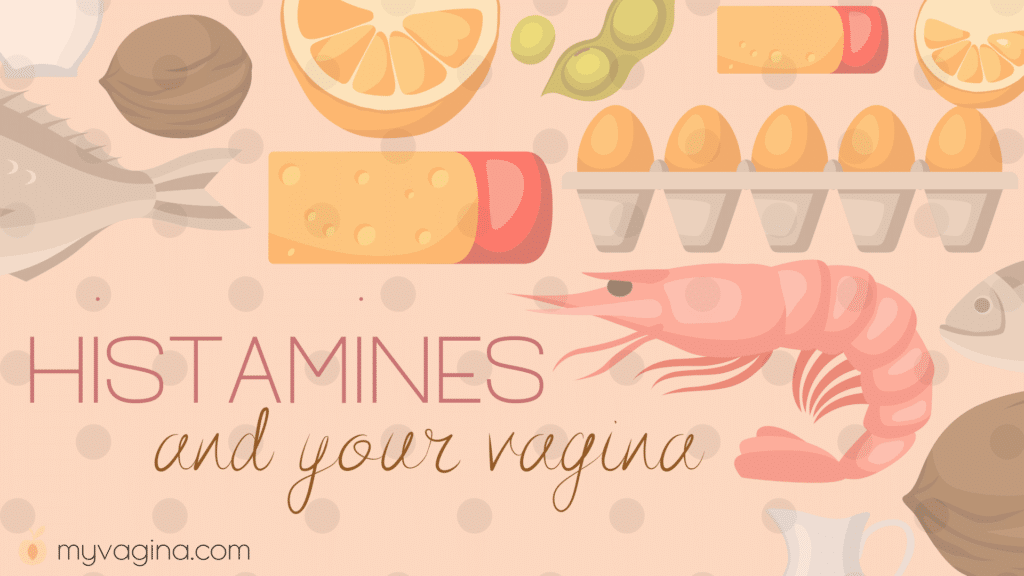Histamine is produced as part of your immune system’s early warning system, but it is also a participant in regular body functions and is present in food.
We associate histamine release with allergic reactions, but histamine has an amazing array of bodily functions, and receptors are all over. Some foods are high in histamine, while others trigger the release of histamine in the digestive tract.
You can have an excess or a deficiency in histamine, and you won’t always see your classic allergy symptoms. Learn how food becomes high histamine.
The roles of histamine include:
- Regulates the digestive system
- Acts as a neurotransmitter in the spinal cord, brain, uterus and placenta
- Histamine is part of a healthy pregnancy and labour
- Is highly active
- Present in most tissue
- Has a role in arousal (not just sexual, but general ‘up’ states including anxiety)
- Plays a role in appetite
- Plays a role in pain perception
- Plays a role in blood flow (vasodilation)
- Important for secretions (gastric acid, mucous, tears)
- Non-mast-cell histamine plays a role in learning and attention
- Is involved with oestrogen, progesterone and cortisol production and function
Types of histamine receptors
We can follow the breadcrumbs back to the source of the receptors since there are four types of histamine receptors: H1, H2, H3 and H4.
You may have symptoms that are not solved with drug antihistamines, but the issue could still be related to histamine, just a different receptor. Antihistamines are specific to the receptor they target1.
H1 histamine receptors
H1 receptors are involved in the skin, respiratory system, vagina, and urinary tract and produce the most common allergy signs: hives, itching, swelling, and increased mucous production.
Most commercial antihistamines affect these receptor sites. If your reaction was caused due to H1 receptor activity, then H1-targeted antihistamines will work to quell your reaction.
H2 histamine receptors
H2 receptors are found in the digestive system and produce gastric acid.
H3 histamine receptors
H3 receptors are found all over the body and are involved in appetite, with links with anorexia found. H3 is also involved in headaches, nausea, vomiting, sleep issues, and nerves.
H4 histamine receptors
H4 receptors are involved in the immune system.
Symptoms of histamine intolerance
- Skin itching, swelling, hives or rashes
- Itchy or burning eyes
- Itchy nose
- Sneezing
- Wheezing or coughing
- Abdominal cramping or diarrhoea
- Headaches, including hormonal headaches
- Pain after eating and digestive problems
- Food intolerances
- Vulvodynia
- Interstitial cystitis symptoms, painful bladder syndrome
- Urinary tract problems, recurrent UTIs and inflammation
- Vaginal or vulva itching, pain, or burning
- Recurrent, treatment-resistant vaginal infections such as bacterial vaginosis (BV) or aerobic vaginitis (AV)
Causes of histamine intolerance
- Small intestine bacterial overgrowth (SIBO)
Some bacteria overgrow, resulting in the production of excess histamine from gut inflammation and undigested food - Bacterial, yeast or parasitic infections
- Histamine-producing bacterial overgrowth
- Methylation impairment
- DAO (diamine oxide) deficiency due to genetics
Less DAO means more histamine, as DAO is the enzyme that breaks down histamine. - Chronic inflammatory response syndrome (CIRS)
Those exposed to mould toxicity can develop histamine intolerance - Heavy metal toxicity
- Some medications that block DAO enzyme activity
Foods high in histamine/histamine-releasing
- Alcohol, especially beer and wine
- Cheese, particularly aged cheeses
- Dried fruits
- Ferments – sauerkraut, kombucha, water or milk kefir, yoghurt
- Processed, smoked and cured meats like bacon, salami, and deli meat
- Seafood (unless extremely fresh)
- Vinegared foods and vinegar, i.e. pickles, olives
- Some fruits and vegetables – citrus fruits, avocado, eggplant, mushrooms, spinach, tomatoes
Foods that release histamine in the digestive tract
- Alcohol
- Bananas
- Chocolate
- Eggs
- Fruits like papaya, strawberries and pineapple
- Shellfish and fish
- Tomato
Look into the low-histamine diet overview or the low-histamine experiment, which includes supplements that might help.
References
- 1.Church M, Church D. Pharmacology of antihistamines. Indian J Dermatol. Published online 2013:219. doi:10.4103/0019-5154.110832
Get a fresh perspective with a qualified, experienced vulvovaginal specialist naturopath.
This product has multiple variants. The options may be chosen on the product pageThe most comprehensive vaginal microbiome test you can take at home, brought to you by world-leading vaginal microbiome scientists at Juno Bio.
Easy-to-use BV and AV treatment program.
Promote and support a protective vaginal microbiome with tailored probiotic species.






